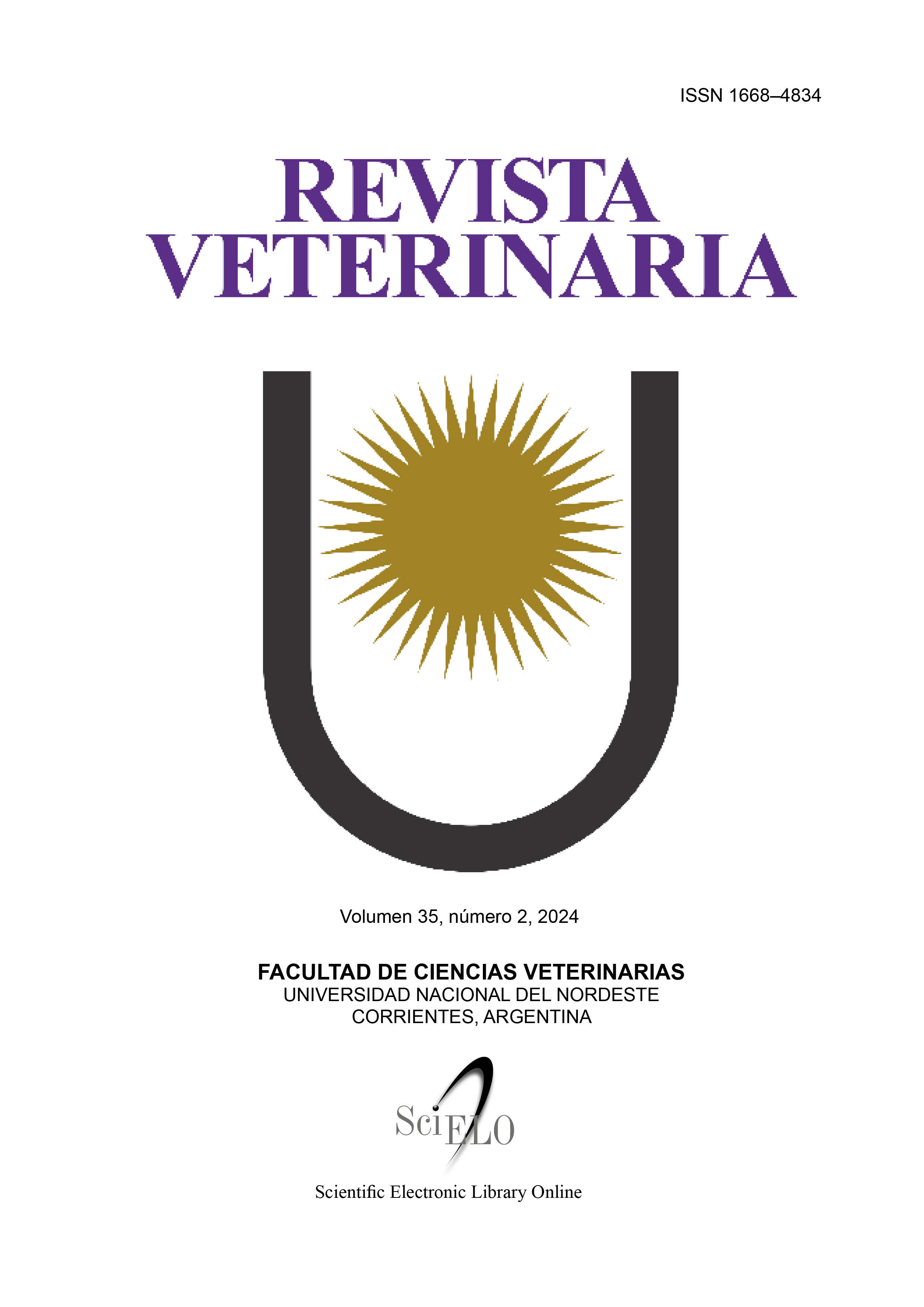Amblyomma ovale Koch, 1844 (Acari: Ixodidae) parasitizing (Sus scrofa) in Corrientes, Argentina
DOI:
https://doi.org/10.30972/vet.3527873Keywords:
Ticks, Distribution, Feral mammalsAbstract
In December 2023, a female specimen of Amblyomma ovale was collected from a juvenile Sus scrofa found in the locality of Alen Cue (San Martín Department, Corrientes Province). This finding of A. ovale represents the first record of a parasite-host association in this mammal species in Argentina, where it is considered a tick of public health importance.
Downloads
References
Ballari SA, Cirignoli S, Winter M, Cuevas MF, Merino ML, Monteverde M, Barrios-García MN, Sanguinetti J, Lartigau B, Kin MS, Relva MA. Sus scrofa. En: SAyDS–SAREM (eds.) Categorización 2019 de los mamíferos de Argentina según su riesgo de extinción. Lista Roja de los mamíferos de Argentina. 2019. Disponible en: http://cma.sarem.org.ar.
Debárbora VN, Nava S, Cirignoli S, Guglielmone AA, Poi ASG. Ticks (Acari: Ixodidae) infesting endemic and exotic wild mammals in the Esteros del Ibera wetland, Argentina. Syst. Appl. Acarol. 2012; 17: 243-250.
Forlano M, Scofield A, Elisei C, Fernandes KR, Ewing SA, Massard CL Diagnosis of Hepatozoon spp. in Amblyomma ovale and its experimental transmission in domestic dogs in Brazil. Vet Parasitol. 2005; 134: 1-7.
Guglielmone A, Nava S. Las garrapatas argentinas del género Amblyomma (ACARI: IXODIDAE): distribución y hospedadores. RIA. 2006; 35 (3), 133-153.
Guglielmone AA, Nava S, Robbins RG. Neotropical Hard Ticks (Acari: Ixodida: Ixodidae). Ed. Springer International Publishing. Berlin/Heidelberg, Germany. 2021. 486 pp. DOI: 10.1007/978-3-030-72353-8
Lamattina D, Tarragona EL, Nava S Molecular detection of the human pathogen Rickettsia parkeri strain Atlantic rainforest in Amblyomma ovale ticks in Argentina. Ticks Tick Borne Dis 2018. 9(5):1261–1263. https://doi.org/10.1016/j.ttbdis.2018.05.007
Labruna MB, Mattar S, Nava S, Bermudez S, Venzal JM, Dolz G, Abarca L, Romero L, Sousa R, Oteo J, Zavala-Castro J Rickettsioses in Latin America, Caribbean, Spain and Portugal. Rev MVZ. 2011. 16(2):2435-245.
Nava S, Venzal JM, González-Acuña D, Martins TF, Guglielmone AA. Ticks of the southern cone of America: diagnosis, distribution and hosts with taxonomy, ecology and sanitary importance. Elsevier, 2017. London, 348 pp.
Santana MS, Hoppe EGL, Carraro PE, Calchi AC, de Oliveira LB, do Amaral RB, Mongruel ACB, Machado DMR, Burger KP, Barros-Batestti DM, Machado RZ, André MR. Molecular detection of vector-borne agents in wild boars (Sus scrofa) and associated ticks from Brazil, with evidence of putative new genotypes of Ehrlichia, Anaplasma, and Haemoplasmas. Transbound. Emerg. Dis. 2022; 69(5): e2808–e2831.
Spolidorio MG, Labruna MB, Mantovani E, Brandao PE, Richtzenhain LJ, Yoshinari NH. Novel spotted fever group rickettsiosis, Brazil. Emerg. Infect. Dis. 2010; 16: 521-523.
Vizcaychipi KA, Giménez MD, Casas N, Lloveras S, Cicuttin GL, Lamattina D, Marx J, Pedrozo W, Rinas M, DeMatteo KE, Couto E, Faccini-Martínez ÁA, Armitano R. Caso autóctono de rickettsiosis por Rickettsia parkeri en la Selva Paranaense, Misiones, Argentina. Rev. Argent. Microbiol. 2022; 55(1): 111-120.
Downloads
Published
How to Cite
Issue
Section
License

This work is licensed under a Creative Commons Attribution-NonCommercial 4.0 International License.
Revista Veterinaria (Rev. Vet.) maintains a commitment to the policies of Open Access to scientific information, as it considers that both scientific publications as well as research investigations funded by public resources should circulate freely without restrictions. Revista Veterinaria (Rev. Vet.) ratifies the Open Access model in which scientific publications are made freely available at no cost online.











.jpg)
.jpg)



